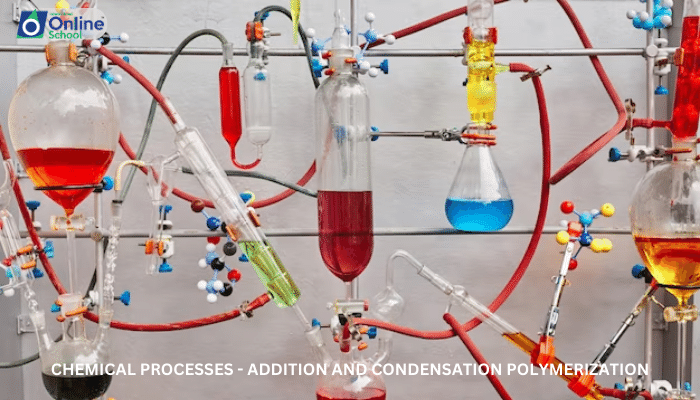
Learning Outcomes
By the end of this lesson, students should be able to:
i. Explain the concept of polymerization, the process of forming long-chain molecules (polymers) from repeating units (monomers).
ii. Differentiate between addition polymerization and condensation polymerization, two fundamental polymerization mechanisms.
iii. Describe the steps involved in addition polymerization, including initiation, propagation, and termination.
iv. Explain the concept of condensation polymerization, involving the removal of a small molecule (byproduct) during the formation of the polymer chain.
v. Identify examples of addition polymers (polyethylene, polypropylene) and condensation polymers (nylon, polyester) and their applications.
Introduction
Polymers, long-chain molecules formed by the repeated linking of smaller units called monomers, have revolutionized various industries due to their diverse properties and applications. Understanding the fundamental polymerization processes, addition and condensation polymerization, is essential for comprehending the synthesis and properties of these essential materials.
i. Addition Polymerization: A Chain Reaction
In addition polymerization, monomers undergo a chain reaction, involving three main steps:
Initiation: A reactive species, called an initiator, opens the double bond of a monomer, forming an active center.
Propagation: The active center attacks the double bond of another monomer, adding it to the growing polymer chain. This process repeats, forming a long chain.
Termination: The active center is deactivated by various mechanisms, such as radical combination or disproportionation, ending the chain growth.
Examples of Addition Polymers:
Polyethylene (PE): Used in packaging, films, and construction.
Polypropylene (PP): Used in fibers, packaging, and automotive parts.
Polyvinyl chloride (PVC): Used in pipes, fittings, and construction materials.
ii. Condensation Polymerization: A Step-Growth Process
Condensation polymerization involves the reaction of two monomers, where a small molecule (byproduct), such as water or an alcohol, is eliminated at each step. The process proceeds in a stepwise manner, forming a polymer chain through the formation of amide or ester linkages.
Examples of Condensation Polymers:
Nylon: Used in textiles, carpets, and engineering plastics.
Polyester: Used in textiles, fibers, and packaging.
Polyurethane: Used in foams, coatings, and adhesives.
Addition and condensation polymerization are two fundamental processes that generate a wide range of polymers with diverse properties and applications. Understanding these mechanisms is crucial for appreciating the versatility and importance of polymers in modern society. From packaging and construction to textiles and engineering materials, polymers play a pivotal role in shaping our world.